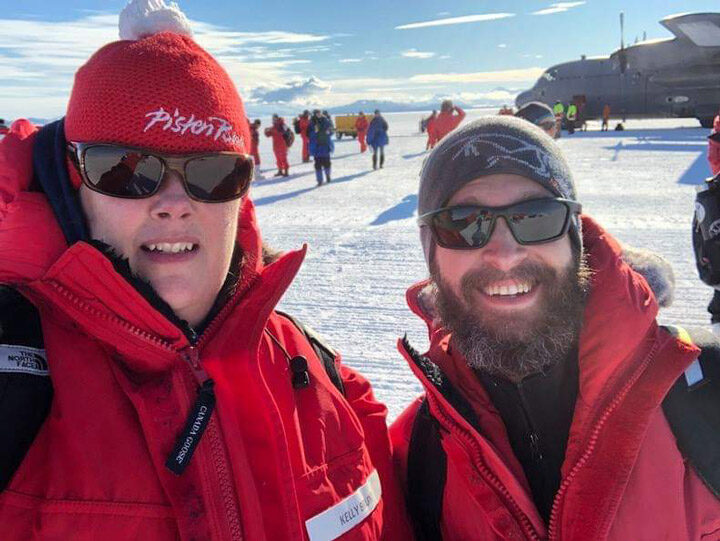

We are still at South Pole Station.
As we were finishing up the preparation of the sleds used on the 88S Traverse, we realized that we were missing a couple of fittings that pair our propane tank to 2 Coleman cook stoves. It seems like a small part, but that part is fundamental in allowing us to cook meals while simultaneously melting water to stay hydrated. So we were stuck…

We called the science-support crew in McMurdo that had the fittings and they tried to get the part on the next plane to the South Pole. That plane would be the last one to arrive before a long 2-day break associated with the New Year holiday. The science-support crew in McMurdo went so far as to chase down the vehicles headed to the airfield to hand them this part! But they couldn’t chase them out onto the ice shelf, to the airfield associated with aircraft equipped with skis. So we ended up spending New Year’s Eve at the South Pole.
While time at South Pole is arbitrary, the convention here is to be on New Zealand time, primarily based on the air support through Christchurch. About a couple hundred yards from Amundsen-Scott South Pole Station is a large camp associated with expeditioners that come to the South Pole, with a commercial logistics provider. Their air support is through South America. Thus, people that are just a couple hundred yards celebrated the New Year 16 hours apart.

The coolest thing about spending the New Year at the South Pole is the 1 January ceremony to place a geodetic benchmark on the geographic South Pole, or 90°S. Ice sheets are dynamic; they move under their own weight very slowly, like thick maple syrup moving toward the edge of your pancakes. Thus, South Pole Station is slowly moving away from the geographic South Pole. Every year, on the first of January, a new benchmark is placed on the surveyed geographic South Pole. The benchmark itself is designed by the science-support crew that spends the long, isolated winter at the station, ensuring that continuous scientific observations are kept running!
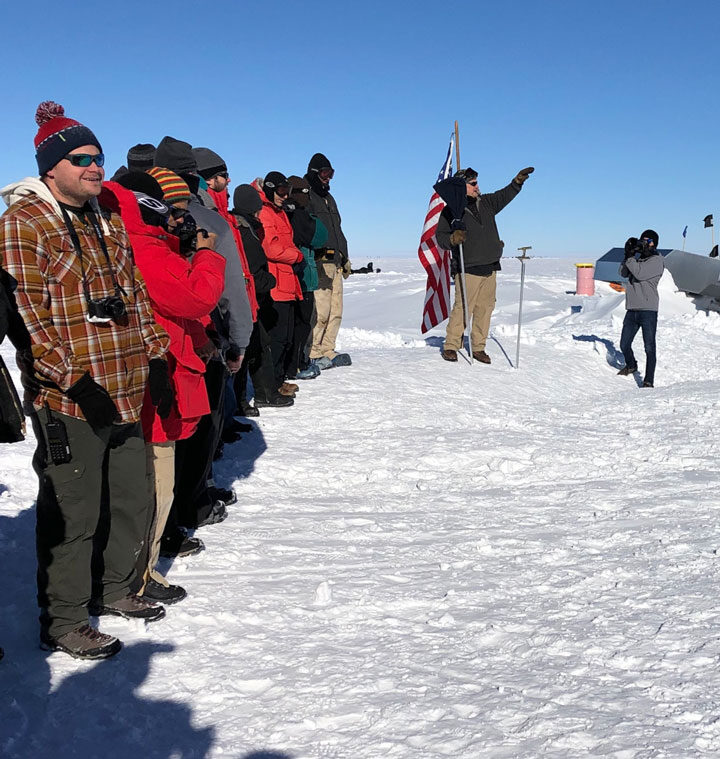
The old benchmarks are removed and put on display inside the station. They often represent current happenings at South Pole Station, such as the year that the new station was completed. The older benchmarks contain the names of the US Geological Survey personnel that used to come down and survey the geographic South Pole; I used to work with many of those folks and it was pretty cool to see their names again! The newer benchmarks often contain the names of all of the winter-over science-support personnel, or the folks that designed the new benchmark.

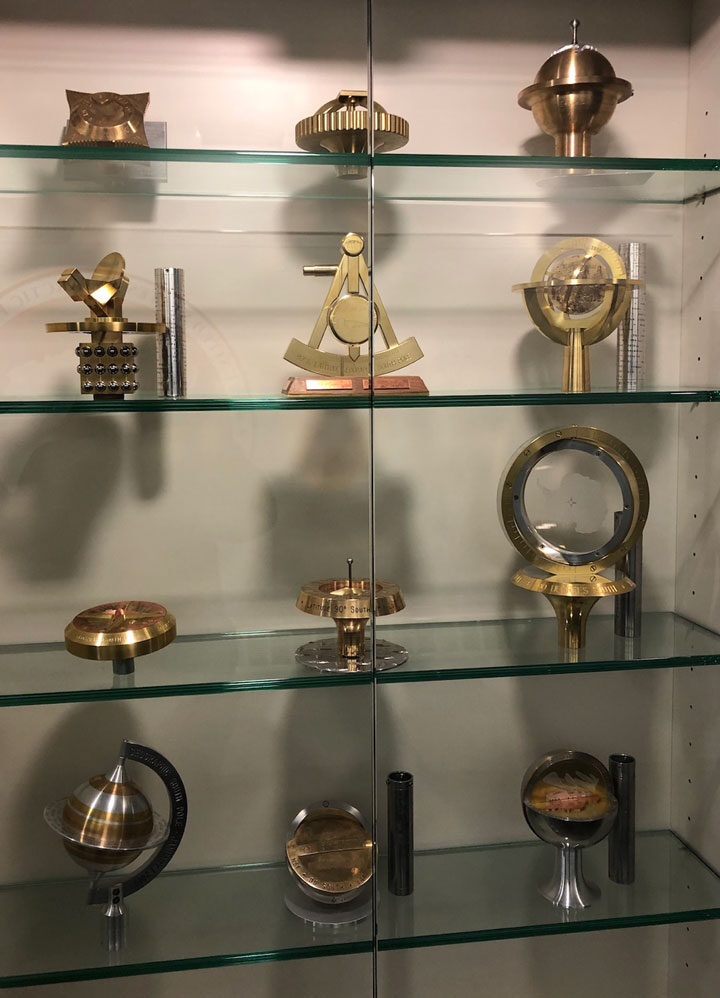
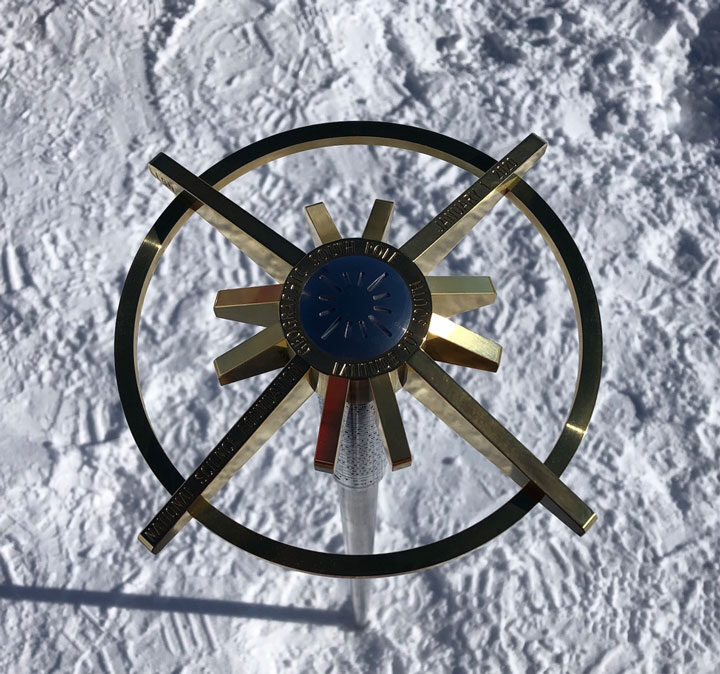
Happy New Year!
-Kelly & Thomas
The third 88S Traverse is about to commence!
For the past couple years, we have conducted a 450-mile ground-based traverse collecting highly accurate GPS elevation data. These data have been used to validate elevations from NASA’s ICESat-2 satellite mission. You can see videos from the previous 2 traverses here and here. And you can see results from the previous traverses here.
Over the past three weeks, we have traveled quite a bit to get to the South Pole. We started in Maryland and flew via commercial airlines to Christchurch, New Zealand. We spent a couple days in Christchurch, where we were provided with special clothing for the extreme cold temperatures of Antarctica. Next, we flew from Christchurch to McMurdo Station, Antarctica, on a New Zealand military C-130 aircraft. That was about a 7-hour flight, with pretty modest accommodations. We spent about a week in McMurdo collecting the gear that we will need for the traverse, such as sleeping bags, tents, radios, etc. Once we had (most) of our gear, we flew from McMurdo Station, which is on the coastline, to Amundsen-Scott South Pole Station, which is in the center of the Antarctic Ice Sheet. That was aboard a US Air National Guard LC-130, which is an aircraft equipped with skis, for landing on the ice sheet.
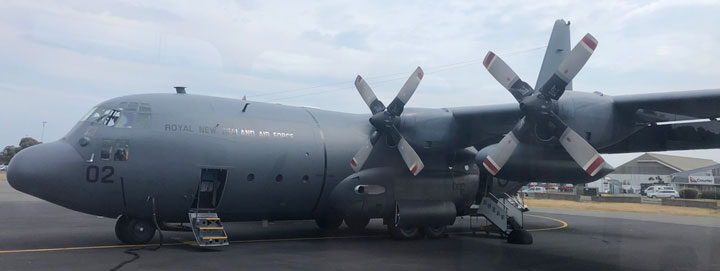
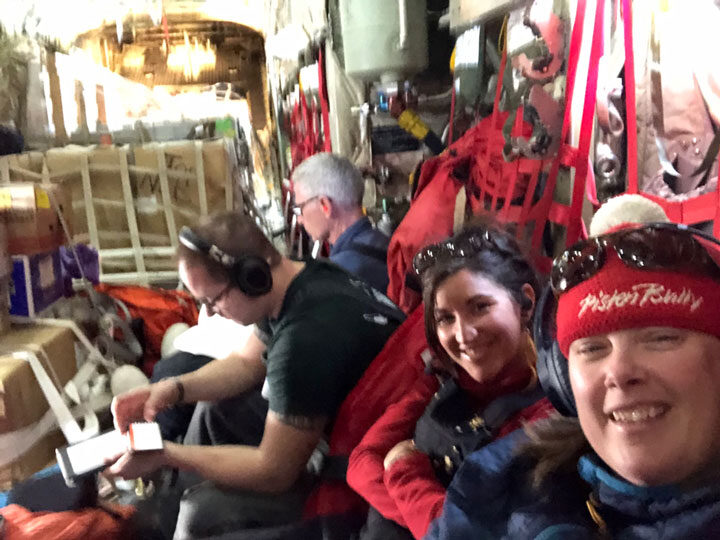
One comment about the South Pole: It’s very high. We are at about 9300 feet above sea level, but the dryness makes it feel more like 10,000 feet or even more, depending on the barometric pressure. Thus, the first few days here are very challenging as your body tries to acclimatize to the altitude. In general, after we arrived, we took it very easy.
Once we arrived at South Pole, we started to rig up our sleds for the traverse. The 88S Traverse is a two-week endeavor using tracked vehicles called PistenBullys to haul sleds that contain all of our equipment needed to live and work on the Antarctic Ice Sheet. The sleds carry our sleeping and eating tents, fully deployed, so we set up camp just once for the entire 2-week traverse! The sleds also carry the survey-quality GPS instruments that we use to collect the elevation data. GPS units in your car are accurate to about 10 to 15 feet. The GPS units that we use are accurate to well within an inch!
The Antarctic summer field season is from about late October to about early February, with the warmest part being in early January. As such, we spent Christmas here at South Pole. The folks here on station do an amazing job to make the holiday great, even though folks are thousands of miles from family. The galley does an especially great job; Christmas dinner was fantastic. The next day, the station hosted the annual Race Around the World, which is a roughly 2-mile running race that intersects every line of longitude. The male winner and the female winner earn a 10-minute shower here at Pole, which is a luxury relative to the usual 2-minute showers that we are allowed, twice a week. Two of the 88S Traverse team members ran the race; Thomas came in second, earning a 5-minute shower!!!
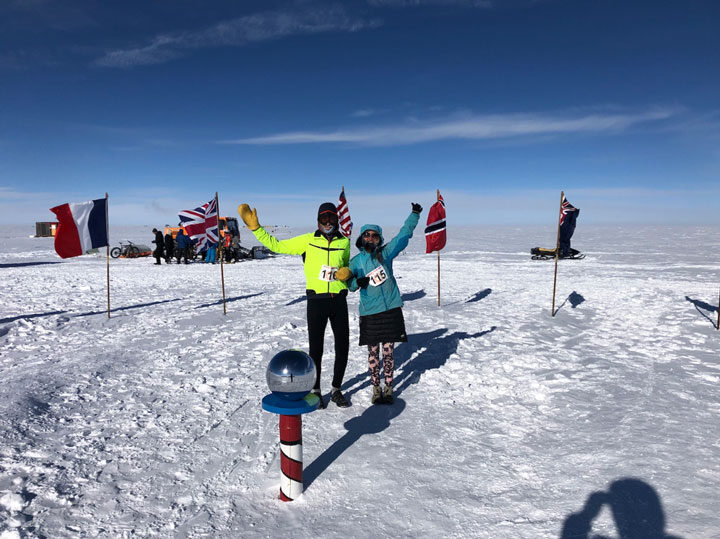
Belated Merry Christmas to folks back home!
-Kelly & Thomas
This winter, our field team of four completed the two-week 88S Traverse in Antarctica in an effort to provide the best means of assessing NASA’s ICESat-2. When you show folks pictures from the trip, they are usually taken by the beauty of the stark landscape. They become interested in hearing more. Then, after you explain daily temperatures, what you ate along the traverse, and your access to WiFi, the trip suddenly seems extreme. And they think you are crazy for participating in such an endeavor.
So, let’s meet the crazy 88S participants.
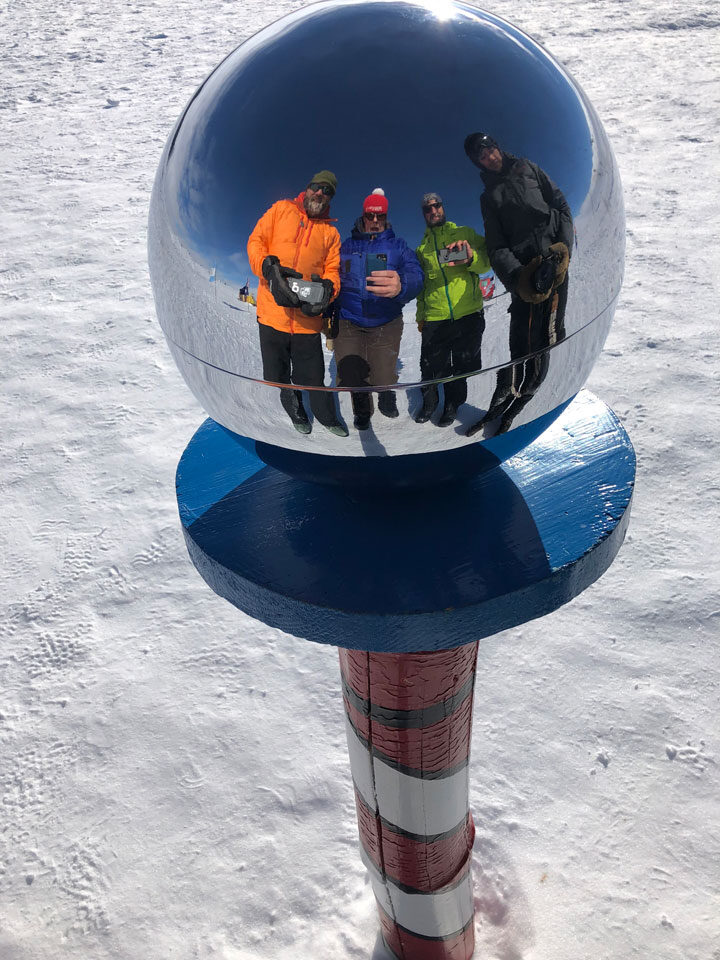
I’m Kelly and I am the leader of this project. This was my second year on the 88S Traverse and I was the only crazy person who had done this twice; everyone else was new to the project this season. That speaks volumes about my deep-field cooking skills! I am a researcher at the University of Maryland and NASA Goddard Space Flight Center, specializing in the remote sensing of ice sheets, and I have been on the ICESat-2 project since 2010. This was my 11th trip to Antarctica, which included a few years with the science support staff at McMurdo Station, a few years of doing field work toward my PhD, a season with the Australians during my postdoc, and then of course a couple of seasons with this project. I grew up skiing in New England and I absolutely love cold environments and the challenges of doing this type of field work.

Adam was the other NASA researcher on this trip. This was his first year on the 88S Traverse and his first trip to Antarctica. Overall, I think he had a really good time! He is also a researcher at the University of Maryland and NASA Goddard Space Flight Center, and has been on the ICESat-2 project since about 2013, where he has been looking at how green laser light from ICESat-2 interacts with the surface of the ice sheet. Adam hails from New Hampshire and loves skiing, so he was enthusiastic and well suited for much of the Antarctic climate.
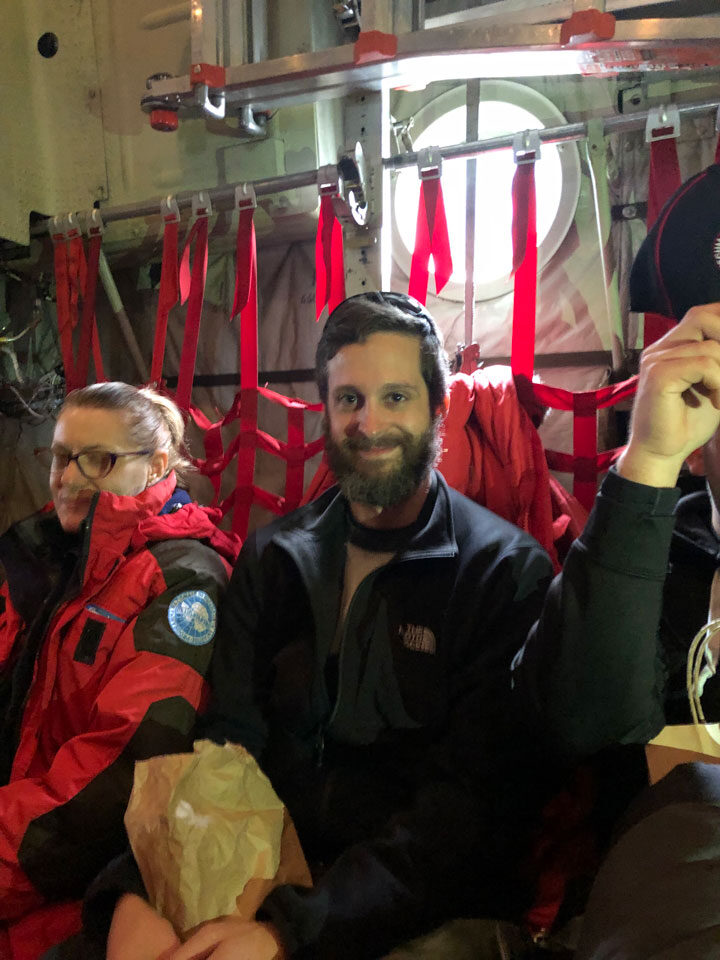
Matt was the Traverse mechanic. Similar to Adam, this was his first year on the 88S Traverse and his first trip to Antarctica. And I know that he enjoyed the experience because he decided to stay in Antarctica for the winter! He took a lead mechanic position at McMurdo Station soon after returning from the Traverse. The winter will be pretty cool for him, as it will allow him to experience being in 24 hours of darkness during the period around the southern hemisphere’s winter solstice (June 21st). Matt is a PistenBully expert and gained his experience at a ski resort in Washington called White Pass, which is where Olympians Phil and Steve Mahre grew up. So, similar to Adam, he also loves skiing and was well suited for much of the Antarctic climate.
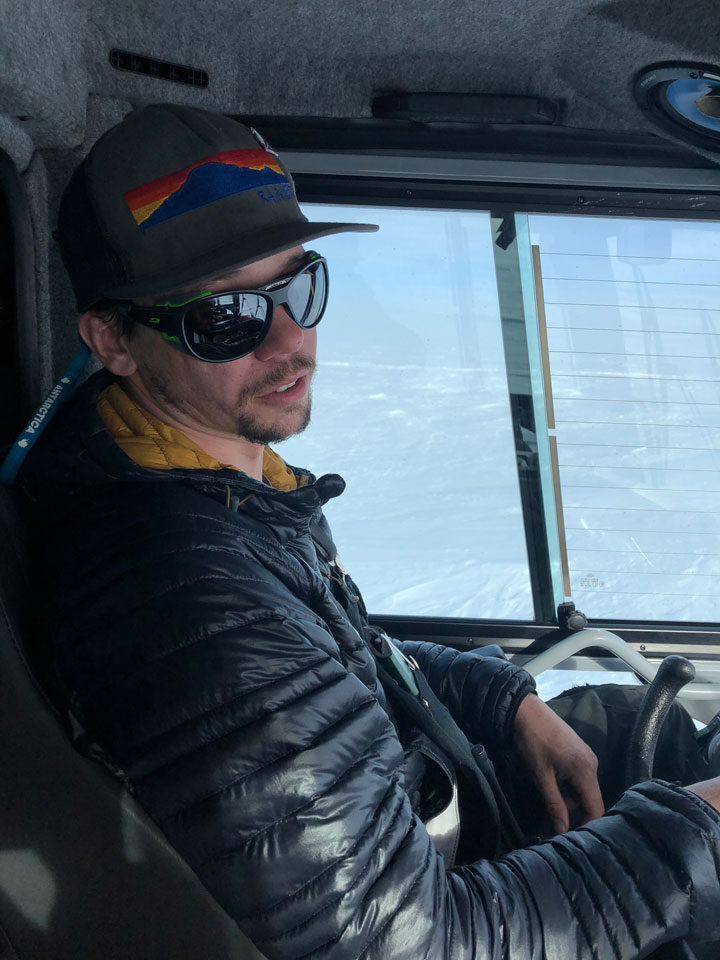
Chris was the Traverse mountaineer and medic. This was his first year on the 88S Traverse but Chris has oodles of experience in Antarctica, dating back to the 1990s. He’s a licensed IFMGA American Mountain Guide that has led trips all over the globe, mostly in steep or icy regions. This type of experience is so important for the safety of field projects that are based on the ice sheet. Added to these highly technical skills is his medical training: Chris was a US Navy Hospital Corpsman and provided us with a top-notch level of experience that we all hoped we would never need while on Traverse. Like Matt, Chris is from the Pacific Northwest and grew up skiing in that region. Most recently claimed Seattle as his home base. After the traverse, Chris briefly joined another Antarctic traverse, which was based out of McMurdo.
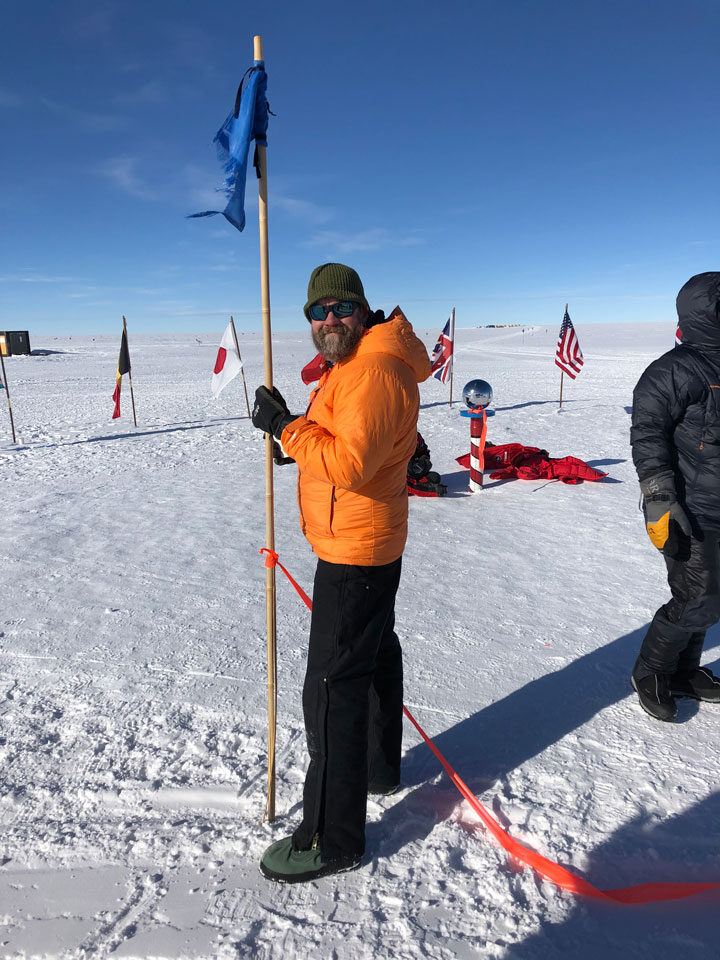
So the common thread between the folks on this traverse was of course the ‘crazy’ component, but also that each of us has an overall love of spending time in cold environments. And coffee. Everyone on this trip loved their coffee.
As you start exploring the ICESat-2 data – released to the public today! – spare a thought to the team that went to the end of the Earth to check it! This winter, we successfully completed the second Antarctic 88S Traverse, collecting highly accurate GPS elevation data for direct comparison with ICESat-2. The comparison provides us with the best means of assessing one of NASA’s newest satellites!
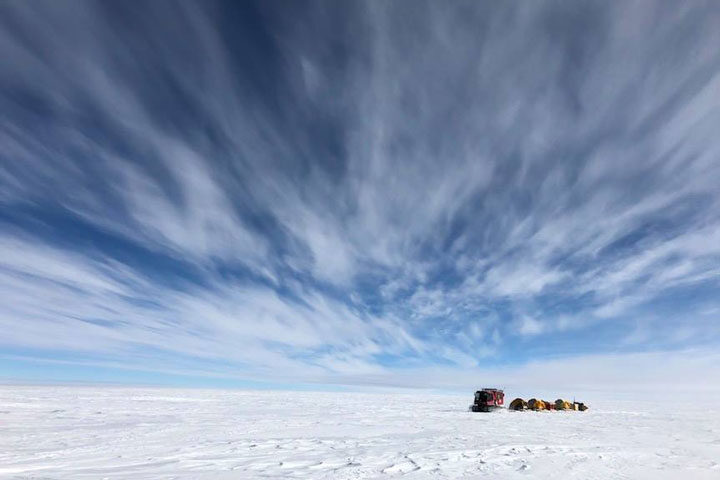
Over 12 days, we drove ~750 km (~450 mi) in slow-moving tracked vehicles called PistenBullys. When I got back from Antarctica, people often asked about the weather: In that region, the weather is generally pretty constant. We had temperatures that were approximately -15C (5F) with light winds. Once, when it got really windy — about 20 knots — the traverse person in charge of safety, Chris, pulled out a Kestrel, or a tool to measure windspeed. He translated that to a windchill temperature, and informed us that it was about -50C (-58F). As luck would have it, that was one of the days that the NASA folks (myself and Adam) had to work outside for a few hours. At least we had warm vehicles to jump into when the outside work was done.
People also asked what we ate: We took turns cooking in the evenings, and we often named our entrees, such as Penguin Noodle (it was chicken) or “Just Like the Olive Garden.” Some folks get imaginative in their cooking, and Chris often prepared multi-course feasts that were always a hit and often copied on subsequent evenings. For the second straight year, I was the worst cook. On the nights that I cooked, the traverse mechanic, Matt, would prepare himself an afternoon burrito, cooked on the PistenBully exhaust pipe (1 hour cook time).
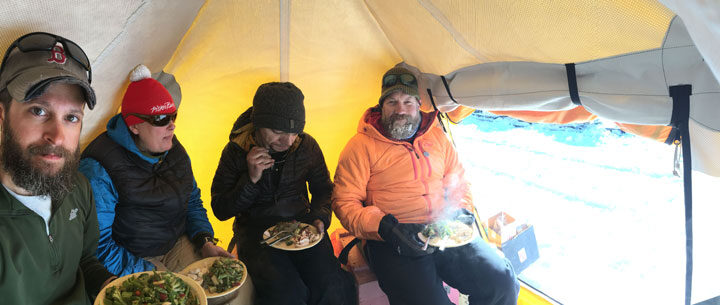
People that are familiar with this type of field work often asked if we encountered any problems along the way. Overall, we had only minimal problems – small things that could be handled rather quickly. And that’s pretty good for a deep-field Antarctic research project. However, the main issue that we did encounter was one of the vehicles really, really struggling with respect to power. That meant that at times, our already slow traverse (~10 km/hour, or ~6 mi/hour) was made even slower (~5 km/hour, or ~3 mi/hour). Our mechanic Matt worked hard to understand the root cause. And all I could do for him was make an 80s playlist while he drove and thought about the problem. Only after the traverse, in a warm garage with the PistenBully hooked up to a diagnostic tool, was he able to determine that it was a bad ECM. I have no idea what that means. But I like that Matt does. Figuring out the problem suggests that these vehicles will be good to go for next season!
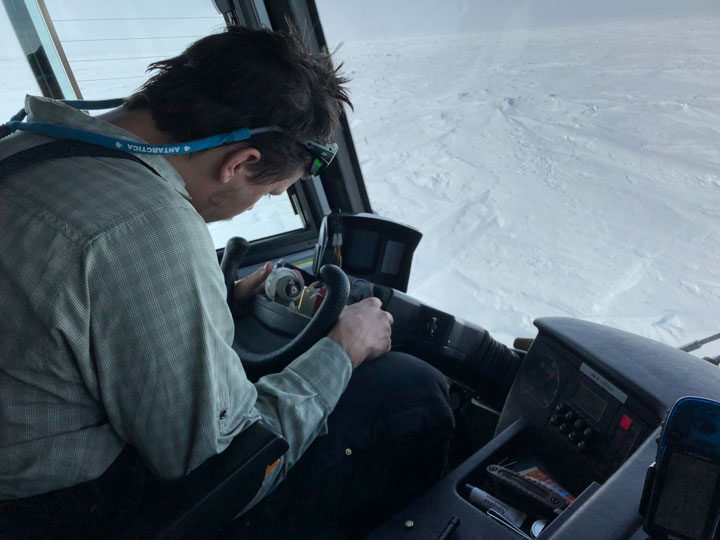
But the most frequent question that people asked this season pertained to the government shutdown this winter: Folks wanted to know whether we were affected, and how were we able to move forward with the field plan. It was quite straightforward. First, neither the traverse researchers (me and Adam) nor the science support staff (Matt and Chris) were civil servants. That helped a lot. But more importantly, following the government shutdown of 2013, which had a major impact on Antarctic research, the National Science Foundation put measures in place to ensure that their busy summer field season (usually from about early October to late January) was uninterrupted in the event of a shutdown during future research seasons. The only real impact of the shutdown on our project was that our blogs were interrupted! We finished our Antarctic adventure back in late January but decided to post a couple blogs summarizing the field season in sync with the public release of the ICESat-2 data – so stay tuned for the next one coming later this week!
And if you’d like to check out ICESat-2 data, visit the NSIDC site at: https://nsidc.org/data/icesat-2
Traveling to Antarctica is no joke even for veterans like Kelly, but especially for first timers like me. This isn’t your run of the mill intercontinental flight; a lot more gear is needed plus required training. There are also a lot of long flights involved. To get to the United States Antarctic Program facilities in Christchurch, New Zealand from the U.S. East Coast, it takes about three layovers, over 30 hours of flying, and some time travel (cross the international date line: lose a day. Do not pass GO. Do not collect $200).
Upon arriving in Christchurch, our first stop is the U.S. Antarctic Program, run by the National Science Foundation. After some briefings on what we will need in Antarctica, what to expect, and what not to do (no touching penguins!), it’s on to the Clothing Distribution Center. It’s probably obvious to most, but Antarctica can get really cold! The U.S. Antarctic Program wants to make sure we stay warm on the ice so they provide us with Extreme Cold Weather gear including boots, snow pants, mittens, hat, neck warmer, goggles, and of course: “big red,” an aptly named parka.
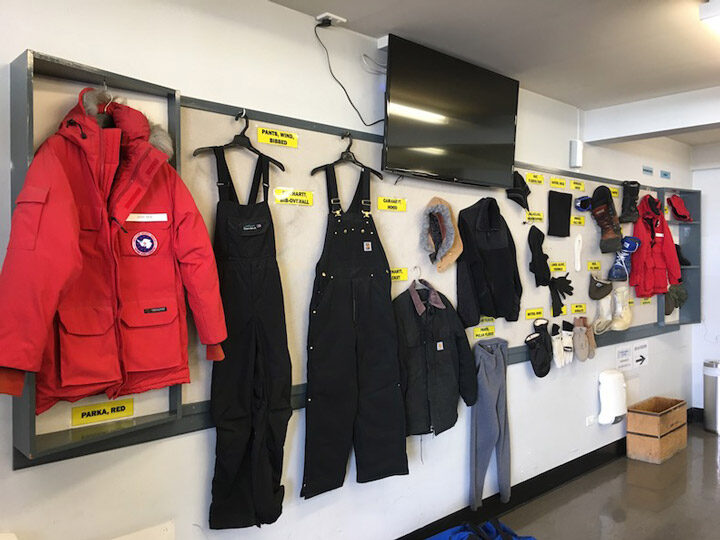
Once we have all our gear and baggage together, it’s time to fly! No 737s here. The U.S. Antarctic Program transports cargo and personnel down to the ice on various military aircraft. We transited on a New Zealand C-130. Seats face the sides of the aircraft instead of forward, and consist of canvas benches with cargo strapping for backs. You get to know your neighbors really well on these flights. Straightening your knees beyond 90 degrees involves some coordination with at least one individual sitting across from you. Weather can change at a moment’s notice down in Antarctica and sometimes that means you need to turn around and head back to Christchurch four hours into a flight. These flights are known as “boomerangs” and are not the most fun.
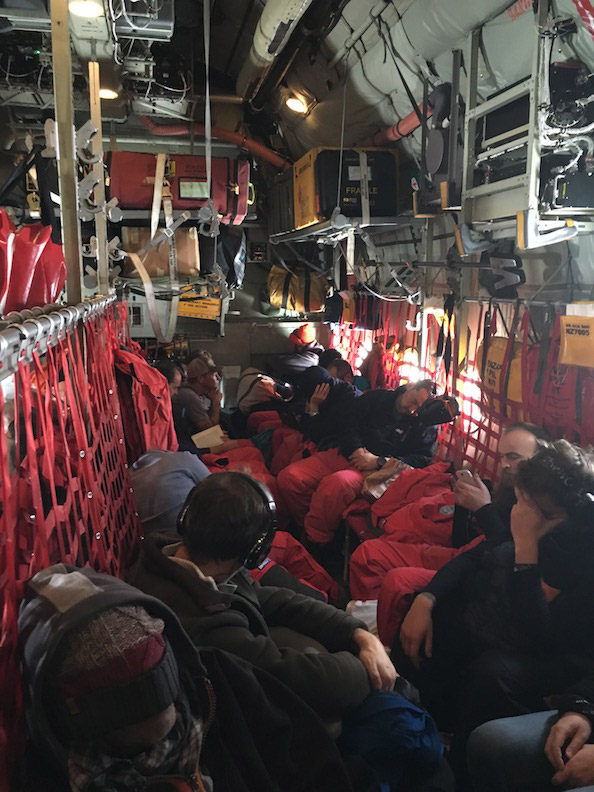
After a scrubbed flight, and one boomerang, we made it to Antarctica. Stepping off the airplane onto the ice runway for the first time is a breath-taking experience. The McMurdo Ice Shelf stretches toward the Ross Ice Shelf to the south, while the Mt. Discovery and the Transantarctic Mountains line the western horizon. Cold, dry air fills your nose and lungs. Your eyes blink, trying in vain to bat away the overwhelming brilliance of sunlight reflecting off the snow. Snow crunches softly under foot. The wind races by and in the distance Mt. Erebus towers, watching all beneath its feet. We’ve arrived. Terra Australis Incognita: Antarctica.
